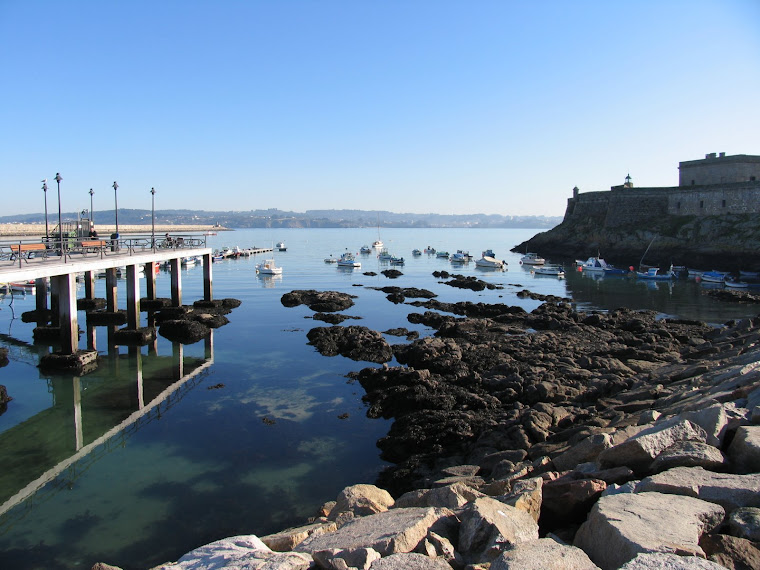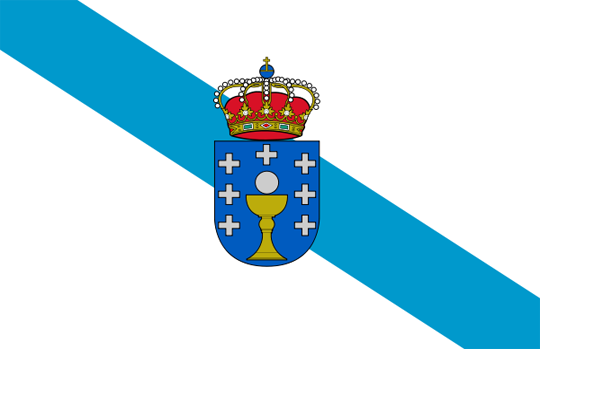 Its great to be in A Coruña on a Sunday. The bars are full of locals who have scant regard for the fact that tomorrow is Monday.
Its great to be in A Coruña on a Sunday. The bars are full of locals who have scant regard for the fact that tomorrow is Monday.Es genial estar en A Coruña en domingo. Los bares están llenos de coruñeses y no importa que mañana sea lunes.
In the bar/restaurant Alcume in the centre of town (as in all the bars) the people are eating, drinking and of course they love chatting with friends.
En el bar Alcume ,en el centro de la ciudad (como todo los bares) se come, se bebe y, por supuesto, encanta conversar con amigos.
Before dinner and after dinner the Spanish like to go out for a stroll not just in A Coruña but all over Spain.
Antes y después de cenar a los españoles les gusta salir a caminar; no sólo en A Coruña, sino en toda España.
Inside the bar/restaurant Alcume el Señor Parillada the bar owner is hard at it. For him Sunday is not a day for rest - on the contrary he has to prepare meals for his customers.
Dentro del bar/restauarante Alcume el señor Parillada, el dueño, trabaja mucho. Para él el domingo no es un día de descanso, al contrario, tiene que preparar las comidas al gusto de los clientes.
He has had this bar/restaurant for 30 years . Normally the bar opens at 8 and closes at 11.30. – perhaps a little later on Saturdays and Sundays.
Regenta este bar/restaurante desde hace treinta años. Normalmente el bar abre a las ocho de la tarde y cierra a las once y media, quizás un poco más tarde los sábados y domingos.
 At 8 o’clock sharp (if his Casio is on the ball) he lights the barbecue and one of the waiters brings in the meat from the outside fridge where it has been on display for all to see. There’s chicken, spare ribs, spicy sausage, pork and lamb chops and of course steaks.
At 8 o’clock sharp (if his Casio is on the ball) he lights the barbecue and one of the waiters brings in the meat from the outside fridge where it has been on display for all to see. There’s chicken, spare ribs, spicy sausage, pork and lamb chops and of course steaks.A las ocho en punto (si su casio está en hora) enciende la barbacoa y uno de los camereros le lleva la carne del frigorífico fuera, donde todo se pueda ver. Hay pollo, costilla, chorizo y chuletas de cordero y de cerdo y, por supuesto, entrecotes.
As well as the usual utensils Señor Parillada is armed with a litre of water, a coffee jar of salt and dozens of lemons. His chef uniform is rounded off by his blue plastic gloves.
Además de los utensilios habituales el Señor Parillada tiene también un litro de agua potable, muchos limones y una jarra grande que contiene sal. Su traje de cocinero se termina con los guantes de plástico azules.
At just the right moment and with just the right amount of food at the ready the cooking begins. From time to time Señor Parillada will disappear behind a wall of steam as he controls the flames with the water bottle.
Al momento exacto y con sólo el alimento suficiente comienza el espectáculo. De vez en cuando el Señor Parillada desaparece al fondo de una pared de vapor para controlar las llamas con el agua.
 The meat is doused in salt and lemon and turned by Señor Parillada until perfectly cooked. It is then chopped, plated and served with bread, salad, Spanish style chips and a wonderful spicy sauce.
The meat is doused in salt and lemon and turned by Señor Parillada until perfectly cooked. It is then chopped, plated and served with bread, salad, Spanish style chips and a wonderful spicy sauce.Empapa la carne en sal y limón y la gira hasta que esté lista, entonces un camerero la corta y la sirve con pan, vino, ensalada mixta, patatas fritas y una salsa picante muy especial.
The local beer or a jug of local wine rounds off this simple feast.
Una jarra del vino de la casa o una cerveza complementa este sencillo banquete.
Another Sunday in AC ends with a coffee and a short stroll back to the hotel.
Se termina otro domingo en el paraíso con un café y un paseo al hotel.





















